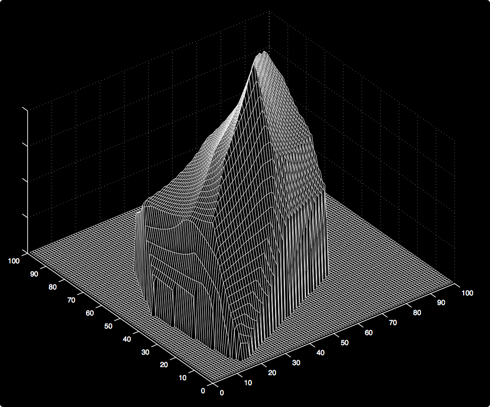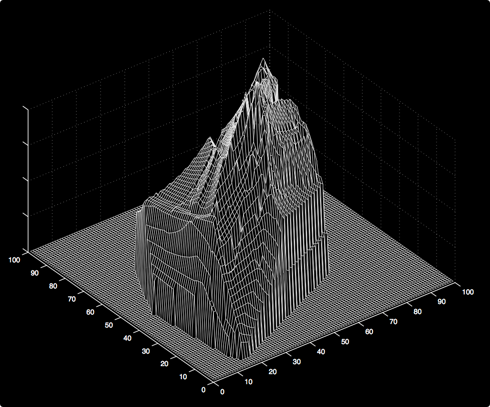
Terachrome Display Technology

Artifacts Plague the Usual Approaches
This diagram plots the luminance gamut for a typical linear optimization approach to multiple-primary color conversion from the scientific literature. MPC displays without Terachrome either require additional filtering steps to hide the artifacts or fail to reach the full brightness capabilities of their hardware.
Terachrome Starts Clean and Stays Clean
The Terachrome plot shows smooth, optimal color conversion without numerical noise or filters. The best way to attain high Image Quality is to avoid introducing artifacts in the first place. Please see the color science page for additional renderings.




Improved Color Conversion for Displays
This diagram below illustrates a typical display’s video processing. Color Conversion translates RGB color specifications to appropriate drive levels for the primary colors of the subpixels. Conventional displays use three primary colors, but advanced displays may use four to six or more colors—known as Multiple Primary Color. This is Terachrome’s forte.


Terachrome is available in algorithm, software, or hardware IP. The actual architecture of the color conversion function depends entirely on the design of the display itself. In most cases the best approach is a multiple-channel lookup table generated and updated dynamically by software in the display controller according to periodic measurements of subpixel color and brightness characteristics.